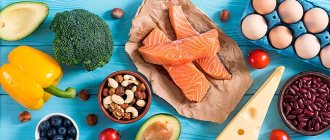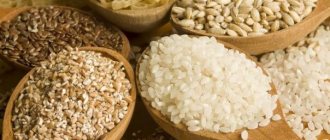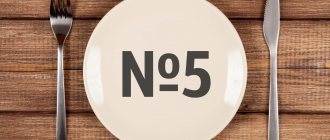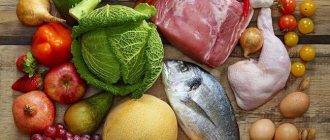Rational nutrition of a child is a necessary condition for his harmonious growth, physical and neuropsychic development. In addition, a balanced diet is the key to maintaining health and resistance to adverse environmental factors, including pathogenic microorganisms. In the first year of life, receiving foods and complementary foods, the baby becomes familiar with almost all the main food groups. Parents and pediatricians pay great attention to the child’s diet during this period, as this is the most vulnerable stage in a person’s life.
Is it possible to transfer a one-year-old child to a common table?
There is an opinion among many people that a child’s diet changes every year, and it can be transferred to a regular table. However, the menu for adults is often unbalanced, containing excess salt and sugar, spices, as well as dyes and preservatives. Common table dishes, as a rule, are prepared with aggressive culinary processing and are depleted in vitamins and minerals. But the main disadvantage of early transfer of a one-year-old baby’s nutrition to a common table is the lack of taking into account the age and individual characteristics of the child. Children in the second year of life maintain a high rate of physical and neuropsychic development, the functional maturation of the nervous, endocrine, digestive and immune systems continues, and the detoxifying function of the liver and kidneys improves. Under the influence of increased motor activity, the musculoskeletal system is strengthened, and the baby’s social adaptation develops. All these processes determine the requirements for the quantitative and qualitative composition of food consumed. Feeding from a common table at this age can cause a child’s deficiency of certain nutrients, vitamins and minerals. Violation of the nutritional status of a one-year-old baby has a negative impact on the formation of health reserves and can increase the risk of diseases both in the present and in the future. That is why the diet per year requires no less attention than the nutrition of a baby in an earlier period.
What to serve?
By the age of 1, your baby has most likely become familiar with almost all types of foods. After 1 year, modifying the diet involves both turning to new products and gradually changing the method of their preparation and the degree of grinding.
Breast or not breast? Despite the fact that the baby has formally already left the ranks of infants, it is perhaps still too early to wean him, especially in the hot season (the latter circumstance significantly increases the risk of catching an intestinal infection). Many pediatricians believe that breastfeeding is worth it until about 20-24 months. After all, sucking the breast not only gives the baby the opportunity to receive tasty milk, but also allows you to feel maternal warmth and care, providing psychological comfort. We must also not forget that milk remains extremely useful at this age: it contains special substances that stimulate the development of the nervous system, in particular the brain, many vitamins, antibodies, and is easily and completely absorbed.
Organization of nutrition for a child in the second year of life
Caring and responsible parents are concerned about what the child needs and can eat and how to properly organize the feeding of the baby at this age. When drawing up a menu for a one-year-old child, it is important to adhere to the basic principles: nutrition must meet energy needs, ensure the supply of necessary macro- and micronutrients; If possible, be varied, while containing the main food groups every day. Of course, home-cooked dishes are increasingly being included in a baby’s daily diet, however, the range, degree of grinding and preparation technology should differ significantly from the diet of adults. In order for the diet to be balanced in terms of the content of essential nutrients, the menu of a child of the second year of life must necessarily include specialized food products that are developed in accordance with the physiological needs of children of this age period and enriched with useful biologically active substances.
Meat and meat products
The share of complete animal protein in a child’s diet per year should be at least 70% of the total amount of protein. In this regard, animal meat and dairy products should be present in a sufficient amount on the menu of a one-year-old child every day. For a child over one year old, the daily diet may include lean varieties of any type of animal meat (beef, pork, rabbit, lamb) and poultry (chicken, turkey). Quantitatively, the baby should receive about 70 grams of meat. Meat products, in addition to their high protein value, are a source of easily digestible iron, zinc, and B vitamins, so their biological value is very high. By-products have limited use in a child’s diet per year and can be used no more than once every 7–10 days. Sausages should not be used in the diet of a one-year-old baby.
Milk and dairy products
Dairy products still play a vital role in the rational nutrition of children over one year of age. It is a source of high-quality protein, easily digestible fat, calcium and vitamins. Many children in the second year of life still continue to receive mother's milk, but it is gradually replaced by fermented milk drinks and products based on whole cow's or goat's milk. Dairy products are used alone or as part of the diet at least three times a day. The optimal amount is up to 500 ml per day for liquid products, as well as 40 grams of cottage cheese and 5 grams of mild cheese. Finished products must not contain dyes or artificial additives, and must also contain a minimum amount of sugar. When choosing ready-made dairy products in the diet of a one-year-old child, preference should be given to specialized dairy products for baby food, which are adapted for this age and meet high quality requirements. Whole cow's milk is introduced into the diet only in children over one year of age, but even in the second year of life, the use of whole milk must be limited due to the high load on the kidneys and the risk of allergic reactions. Pediatricians recommend using special baby milk in the diet of children in their second year of life - formulas 3 and 4 as stand-alone milk-based drinks, but adapted in composition for children over one year of age.
About water
The largest amount of water—about 85 percent—is found in breast milk and infant formula. The composition of “solid” food - bread, porridge, puree - includes 30 percent water. So the baby has enough liquid at the stage of introducing complementary foods. For drinking and preparing formulas and complementary foods, it is better to use special bottled water for baby food
. It is bacteriologically safe, does not contain harmful chemicals and radioactive substances, and does not require boiling.
Eggs, fish and seafood
Chicken and quail eggs are another source of complete protein, and these products are also rich in fat-soluble vitamins, lecithin, iron and phosphorus, which determines their high biological value. In the diet of a one-year-old child, eggs can be used several times a week in the form of hard-boiled eggs, baked in omelettes, cheesecakes and casseroles. Including fish and fish products in the diet of a child in his second year of life allows him to diversify his diet. These products are easily digestible, are a valuable source of microelements, especially iodine and phosphorus, and at the same time contain complete protein. Low-fat varieties of fish are introduced into the child’s menu per year and are used in the diet 2-3 times a week. Unfortunately, fish and seafood often cause allergic reactions, so these components must be administered with caution.
Fruits and vegetables
Fruits and vegetables are two more groups of foods that must be present in the daily diet of a child per year. The fruit and vegetable group is a valuable storehouse of biologically active substances necessary for a growing child’s body. They are a natural source of fiber, organic acids, a number of vitamins and minerals. In addition, they contain essential oils and aromatic compounds that improve the taste of prepared dishes. Daily consumption of fruits and vegetables has a positive effect on the digestive processes, as well as on the state of the intestinal microflora. Products of plant origin go well together and complement other food groups. This allows you to include them in various dishes, which appeals to many kids. A child's required daily diet per year should contain about 300 grams of vegetables and 150 grams of fruits. Divide this amount evenly throughout the day and offer it to your baby both as a separate dish (salad or dessert) and as an additive to porridge, meat, and dairy products. For children over one year old, both fresh and heat-treated vegetables and fruits can be used in their diet. If you take these products raw, you need to mechanically grind them by grating them on a fine grater.
Snacking outdoors
During walks in the fresh air, children will happily eat natural and healthy homemade rations. It could be:
- Juice, tea or compote from berries;
- Cottage cheese or other specially prepared dish.
If you plan to feed your baby outdoors, you need to prepare the equipment in advance. Make sure you have dry and wet wipes in advance to wipe off a dirty traveler.
11.07.2018
- Share:
What fruits should you offer your child during the cold season?
The child should receive vegetables and fruits all year round, regardless of the season. What can you offer your baby during the cold season? During this period, the children's diet can include quick-frozen berries, fruits and vegetables, which, thanks to modern freezing methods, preserve essential nutrients and vitamins as much as possible. In addition, during the cold season, it will be useful to add dried fruits to the daily menu of a 1-year-old child. Compared to fresh fruits, they are leaders in the content of minerals (potassium, magnesium, iron) and dietary fiber. Based on dried fruits, you can cook compotes and jelly, and also add them to porridge and cottage cheese. But the consumption of fruit juices must be limited: no more than 100 ml per day for a baby in the second year of life. This is a source of a large amount of easily digestible carbohydrates, which places an intense load on the pancreas, and this product should not be abused. What fruits and vegetables should a child limit their consumption at an early age? Of course, these are home-made canned and pickled vegetables and fruits, as well as products with a tart and pungent taste (fresh onions and garlic, radishes), mustard and horseradish.
Cereals
Grain complementary food - porridge
- is one of the main sources of carbohydrates, vegetable proteins and fats, dietary fiber, iron, selenium, vitamins B1, B2 and PP.
Grain-based complementary feeding should begin with gluten-free
(gluten-free) cereals: rice, buckwheat, and later corn.
Porridges can be dairy or dairy-free, depending on what suits your baby. Dairy-free
cereals are diluted with breast milk or infant formula received by the child.
In the future, if your baby has no problems with absorption, you can start using gluten-containing
porridges: oatmeal, barley, wheat, semolina and porridges made from a mixture of cereals.
Bean products
In children older than one year, the diet can be expanded with legumes. Beans, green peas, and lentils are rich in vegetable protein, but this protein is incomplete, and therefore the main nutritional value of these products lies in the high content of dietary fiber, microelements and B vitamins. But all legumes increase gas formation in the intestines and are not easily digestible foods. In this regard, legumes can be present in a child’s menu no more than 2 times a week per year; when cooking, they must be thoroughly boiled.
Porridge and bakery products
Grain-based products are the basis of modern rational human nutrition, especially for children in the first years of life. The advantage of this food group is that cereals contain almost all the essential nutrients and are the main sources of energy. Porridge, pasta and bakery products are combined with many other food groups, provide long-lasting satiety and have excellent taste. A large number of cultivated grains makes it possible to make the diet varied and balanced, including different types of flour and cereals in the baby’s weekly menu. Porridge as an independent dish should not be included in a child’s diet more than once a day. The recommended serving size of porridge is 150–200 ml. However, the grain component can be added to meat, vegetable and dairy dishes. The recommended daily amount of bread in a child’s diet per year is 50–60 grams, preferably wheat, since rye bread is less digestible for children and stimulates fermentation processes. It is better if a young child’s diet does not include fresh bread, but yesterday’s bread or slightly dried bread. Grain products in the diet of babies stimulate the development of chewing muscles and contribute to the formation of the maxillofacial apparatus.
Regime or freedom?
Each country has its own attitude towards the regime. For example, in Holland children are put to bed at about 7 pm, Indians finish their evening meal only at 10 pm, and in Brazil a child can “feast” with his parents until 1 am. And yet, according to the work of recent years, if the family has a well-established routine and practices early bedtimes, the likelihood that the child will be obedient is much higher.
Research shows that a clear and strict routine does not affect a child's success in school. But it increases the baby’s social adaptability and calmness.
- New arguments in favor of the regime were published in a study by British scientists (Millennium Cohort Study). About 10,000 babies and their mothers took part in the survey, and at each age stage - 3, 5 and 7 years old - the results were similar: children who went to bed late and/or did not follow the schedule were more irritable and often hyperactive, and those who Those who went to bed according to a clear schedule turned out to be much calmer and socially adapted. Moreover, if the regime was absent at 3 years of age, but introduced at a later age, the child’s behavior invariably improved.
- These days, you can often find parents who regularly go out late at night with their younger children. The advantages of this situation are completely obvious: mom and dad do not suffer from isolation and lead a busy life, and children get used to communicating with different people and gain new experiences. In addition, a free schedule allows you to adapt to the individual characteristics of the child: some need more time to sleep, others less.
- No matter how free-thinking the idea of a free schedule may seem to strict parents, in fact, almost all children develop their own specific schedule already in the first weeks of life. Parents with a free-roam philosophy simply follow their baby's natural biorhythms rather than setting a strict sleep and meal schedule. In this case, adults learn to be attentive to the child’s needs, catching changes in his mood and well-being in time and responding to them.
- There is no official sleep standard; you can easily determine it for your child yourself if you allow him to sleep in the morning and afternoon as much as he wants. Many doctors claim that this norm for a child from one to 4 years old is on average 12–14 hours a day, although, of course, much depends on the individual characteristics of a particular child.
In the case of a strict regime, the problem is that sooner or later every second or third child living according to such a schedule decides to rebel. This is real statistics cited by Western sleep experts.
Sweets and confectionery
Confectionery products made on the basis of margarine, as well as those with a high sugar content, should not be used in the diet of children in the first three years of life. Cakes, pastries and chocolate should also be excluded. Nuts have limited use in children of the first years of life and are used as finely ground additives in cereals and baked goods. What confectionery products can a one-year-old child eat? In the diet of a one-year-old baby, it is permissible to use natural marshmallows, marshmallows and marmalade in an amount of no more than 15 grams per day. These products can be included in the afternoon snack menu or offered after the main meal as dessert. Using sweets at other times may affect the child's appetite for the next meal. In addition, excessive consumption of sweets leads to the development of dental caries and excess weight.
How to give water to a child?
The first drinks should appear in the baby’s life simultaneously with the start of complementary feeding. There are several ways to give your baby something to drink: a spoon is ideal for the little ones, and when the child gets a little older, you can offer him a special children's sippy cup. But pediatricians are wary of drinking from a bottle: in an infant, this can provoke refusal of the mother’s breast, and subsequently it is more difficult to teach such children to drink from a cup. For an older child (after about 2 years), you can buy a beautiful “sports” drinking bottle.
When your baby needs extra fluid
*Temperature above 38 °C
*Vomit
*Diarrhea
*Dry and hot weather
Edible fat
Dietary fats in the form of vegetable oils and butter are very important components of a balanced human diet. Vegetable oils contain polyunsaturated fatty acids, which are absolutely necessary for the normal functioning of the cardiovascular and nervous systems, the synthesis of hormones and many other important biologically active substances. In the diet of a one-year-old child, the approximate daily amount of vegetable oil should be 5 grams (1 teaspoon). Butter is an easily digestible product with excellent taste and an excellent addition to cereals and vegetable products. Every day a baby can eat up to 15 grams of butter with a fat content of 72.5–82%.
Salt
Another question that parents often worry about when organizing meals for a child over one year old is whether salt can be used. It is the main source of sodium, the level of which in the blood must be within a strict range. Both a decrease and an increase in this indicator compared to the norm can cause deviations in health. Therefore, it is necessary to use salt in the diet of a baby over a year old, but you need to control its amount. For cooking, use no more than 3 grams of salt per day (1/2 teaspoon). Industrially produced baby products do not require additional salting.
Compotes, fruit drinks, jelly
As your baby grows, his diet becomes more varied. After the baby celebrates his first birthday, you can pamper him with compotes, fruit drinks and jelly. As in the case of juices, you should start with small portions (up to 10 ml) of mono-ingredient drinks - that is, made from one fruit. And if the acquaintance goes well, you can move on to more complex drinks.
It is best to start with compotes made from hypoallergenic apples, pears, plums and dried fruits. If your baby likes a new treat, after a while you can offer him berry fruit drinks and jelly. Give preference to drinks from trusted manufacturers of children's food products, and keep industrial fruit drinks and jelly that you drink yourself away from children at least until they are 4-5 years old.
Diet of a one-year-old child
Just like adults, babies' daily diet includes three main meals: breakfast, lunch and dinner. Proper selection of foods ensures the main supply of energy and nutrients. Thus, the breakfast and dinner menu should cover up to 20–25% of the daily energy requirement, and lunch – 30–35%. In the diet of young children, three additional meals are required: second breakfast, afternoon snack and a milk drink before bed. The volume of the stomach in the second year of life is no more than 300 ml, so the volume of one feeding cannot be more than 250–300 ml. In this regard, additional meals are necessary for the baby, and they account for 10% of the daily calorie intake. Choose the diet for second breakfast and afternoon snack in such a way that it does not affect your appetite for the main meal.
What products does a one-year-old baby need?
It is necessary to organize the child’s diet per year so that the daily total calorie content of the menu is at least 1300 calories. The diet will be the same at 18 months.
But even here it is important to take into account the individual characteristics of the little person. After all, some children grow up very playful and active, others - on the contrary. Therefore, some babies may require supplements periodically.
Below is a table showing the foods needed for one-year-old children and their quantities.
| Product | Quantity |
| milk (including breast milk) | 400 ml |
| cottage cheese | 50 g |
| kefir | 150 g |
| meat | 60 g |
| porridge | 200 g |
| fruits | 110 g |
| vegetables | 200 g |
| fish | 60 g |
| liver | 20 g |
| eggs | 20 g |
| bread | 10 g |
| cookie | 15 g |
| fruit juice | 100 g |
It is very important to consider some other factors when shaping your diet. Vegetables and fruits should be selected according to the season to ensure maximum benefits for the growing body. This is emphasized by Dr. Komarovsky and other famous pediatricians.
When creating a menu for your baby every day, you don’t need to try to include all the products listed above. For example, it is enough to give fish, liver, eggs to children of this age twice a week.
Diet
A child needs to be fed six times a day from one year to one and a half years. However, the main meals are breakfast, lunch, dinner, afternoon snack and dinner. In the early morning, breastfeeding or formula feeding occurs, and the last meal before bed may consist of a fermented milk product. Having received food before bedtime, children sleep more soundly. What is included in the menu for a one-year-old baby, and approximate recipes are described in detail below.
Breakfast
The time of the first meal depends on exactly when the baby wakes up. If at first the mother puts him to the breast after waking up, or gives him a bottle of formula, then later such feeding replaces a full breakfast. In the morning, it is advisable to give children porridge with goat's or cow's milk. For porridge, milk must be diluted. If you are intolerant to milk, you can use the mixture to make porridge.
The best foods for one-year-old children are: rice, buckwheat, oatmeal, millet, and corn porridge. The proportions for preparation are as follows: 200 g of liquid and 2 tbsp. l. cereals You need to boil the cereal for about 15 minutes. You can add pieces of fruit or grated fruit to the porridge. By the way, semolina porridge is less healthy than the listed cereals.
Twice a week you can cook an omelette for breakfast from one egg (one chicken or two quail). The omelette is steamed and you can add a little milk to it. Fresh dill is also beneficial because it stimulates digestion. For breakfast it is worth giving some bread - ordinary white, but not the freshest. You can wash down your breakfast with dried fruit compote or mild tea.
Lunch
This meal is no less important. For lunch, yoghurt with fruit and fruit puree are suitable, as they actively stimulate the digestive tract and increase the content of gastric juice before lunch. Another healthy lunch option is a baked apple with low-fat cookies. If at this time the mother and baby are walking, then you can have a snack with store-bought baby yogurt or puree from a jar.
Dinner
For lunch, the child can eat either fresh soup or feather soup with a second one. Since lunch is the main meal, the soup can be prepared more satisfying and thick. When preparing meat soup, it is important to drain the first broth, and add vegetables and pre-diced meat to the second. Olive or sunflower oil is suitable for dressing. It is important to remember that it is too early for one-year-old children to prepare bone broth.
The second course can be vegetable puree or unsweetened porridge without milk, accompanied by a meat or fish dish. From time to time you can give liver for lunch. Spices, various fried foods, and a lot of salt should not be added to children's dishes. It is worth making a salad from seasonal vegetables. But any new dish should be introduced into the menu gradually and be sure to observe the body’s reaction to it.
Afternoon snack
This meal should include a small snack. This could be cottage cheese casserole, milk porridge, cheesecakes, etc. The baby will also enjoy snacking on cookies with compote or milk. By the way, cow's milk should be introduced into the diet very carefully. If it is not well tolerated, you can try diluting it with water.
Dinner
Dinner should be planned so that approximately 5 hours pass after lunch. It shouldn't be too late. For dinner, you can prepare a dish that coincides with the second for lunch - porridge, mashed potatoes, stew with small pieces of fish or meat. Add a little vegetable oil to the vegetable stew.
Second dinner
Babies who are still breastfed are offered mother's milk as a second dinner. Artificial producers receive regular or fermented milk mixture. Before going to bed, you should give light and familiar food.
If a child is sick, he may have one extra meal during the day. During this period, children who often wake up at night to drink or eat are gradually weaned off this habit. Indeed, at 12-14 months, the digestive system is gradually rebuilt and begins to work “like an adult.”
As a result, a child’s nutrition at 1.5 years is already more or less established. At one and a half years old, he already has his favorite dishes, and it is easier for parents to create the optimal menu. And at 1.5-2 years old, new dishes need to be introduced into the diet.
Sample menu for a child per year
Breakfast traditionally includes milk porridge, and this is explained by the high nutritional and energy value of milk and cereals. Breakfasts can be varied with pasta and cheese, egg dishes, and cottage cheese products. A warm drink is also recommended to meet your daily fluid needs. For lunch, you can feed your child vegetable or chicken soup with bread, as well as a meat or fish dish with a side dish or vegetable salad. A small amount of fresh or dried fruit compote will help complete your meal. Since lunch involves two or three dishes, do not insist that the baby drinks the entire drink - the volume of his stomach is limited. Offer him water and drinks based on a decoction of fruits and berries without added sugar outside of meals. In the afternoon, please your baby with a delicious fruit and milk dessert, cookies or marshmallows. Dinner must include a hot dish. This could be a casserole or cheesecakes, milk porridge, pasta with a vegetable side dish and a warm drink. If desired, you can offer your child a dairy or fermented milk product before bed. Specialized fermented milk drinks for children not only have high nutritional value, but are also enriched with probiotics, which has a positive effect on the functioning of the gastrointestinal tract.
How to create a menu for every day
For convenience, you can use recommendations that will help you make the menu both varied and satisfying. All of the dishes listed are easy to prepare.
First of all, you need to write down an approximate meal schedule:
- breakfast – 9.00;
- lunch – 11.00;
- lunch – 13.00;
- afternoon tea – 16.00;
- dinner – 19.00;
- snack before bed – 21.00.
Monday
| Breakfast |
|
| Lunch |
|
| Dinner |
|
| Afternoon snack |
|
| Dinner |
|
| Snack before bed |
|
Tuesday
| Breakfast |
|
| Lunch |
|
| Dinner |
|
| Afternoon snack |
|
| Dinner |
|
| Snack before bed |
|
Wednesday
| Breakfast |
|
| Lunch |
|
| Dinner |
|
| Afternoon snack |
|
| Dinner |
|
| Snack before bed |
|
Thursday
| Breakfast |
|
| Lunch |
|
| Dinner |
|
| Afternoon snack |
|
| Dinner |
|
| Snack before bed |
|
Friday
| Breakfast |
|
| Lunch |
|
| Dinner |
|
| Afternoon snack |
|
| Dinner |
|
| Snack before bed |
|
Saturday
| Breakfast |
|
| Lunch |
|
| Dinner |
|
| Afternoon snack |
|
| Dinner |
|
| Snack before bed |
|
Sunday
| Breakfast |
|
| Lunch |
|
| Dinner |
|
| Afternoon snack |
|
| Dinner |
|
| Snack before bed |
|
Food culture
When organizing a child’s nutrition in the second year of life, parents need to plan the weekly diet in advance. You need to distribute dishes evenly so that the menu remains balanced, but at the same time alternates different types of foods within the same food group. Don’t forget to include one of your baby’s favorite dishes in your daily diet; food should bring positive emotions. Children are often conservative and reluctant to try new foods. Don’t insist; next time one of the adults can start eating this dish. This will help attract the child's attention to the product in a playful way. In these situations, creative solutions in the form of decorating a dish in the form of funny animals or using new utensils are also very helpful. Show your imagination, and your baby, backed by positive emotions, will appreciate the new product. Try to teach your child to eat together with adults. This is a unifying factor for the whole family. The baby learns cultural and hygienic skills from the elders, in addition, the child develops an appetite when he sees that his loved ones eat with pleasure.
Which eggs are better: chicken or quail?
Eggs contain easily digestible protein, valuable amino acids, vitamins, micro and macroelements. One egg should be included in the daily diet of a baby in the second year of life (except in cases where the child suffers from a food allergy to chicken protein).
This can be a whole egg, a steamed omelet, or eggs added to culinary products (cottage cheese, pancakes). Under no circumstances should children be given raw eggs.
Quail eggs differ from chicken eggs not only in their higher protein content (with more amino acid tryptophan), but also in their higher fat and cholesterol content. However, they can be a good alternative for children with chicken protein intolerance (1-2 pieces a day or every other day).









